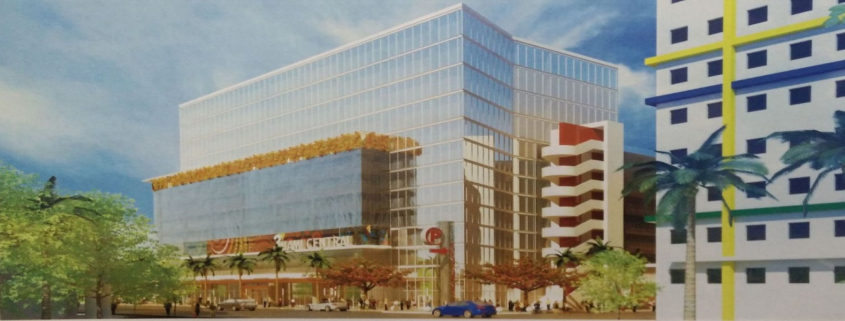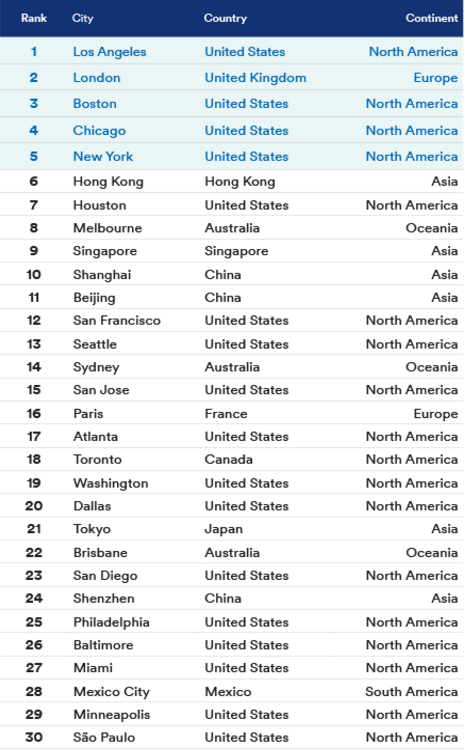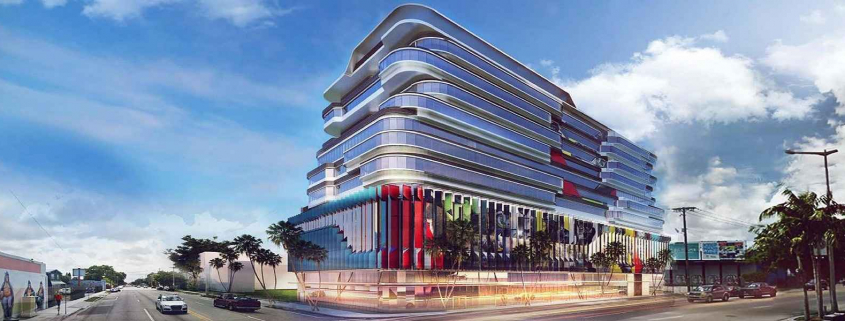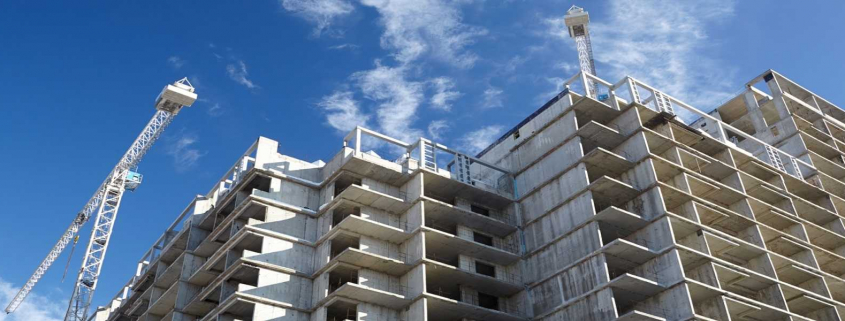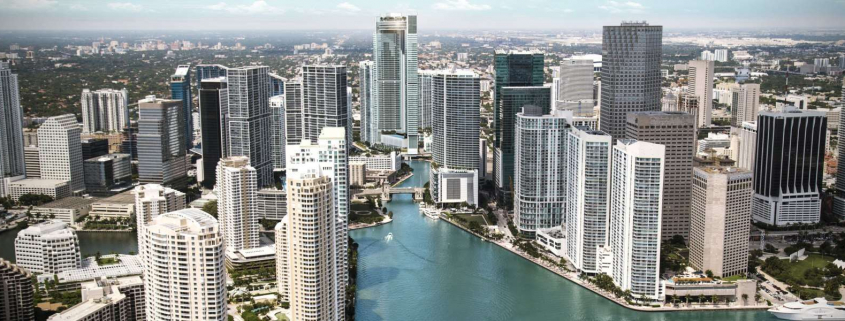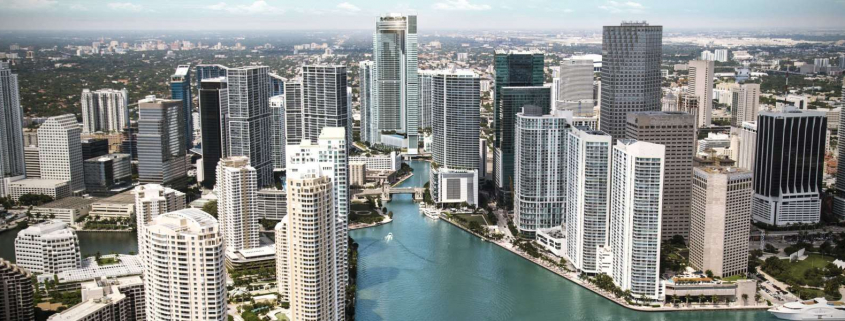A federal program that has help fund dozens of big new South Florida business projects over the past decade by swapping U.S. visas and green cards for foreign investment dollars is teetering on the brink of political extinction, according to its supporters.
The EB-5 visa program, which by the estimate of the investment community has funneled more than $18 billion in overseas cash into U.S. business development since 2008 — including hundreds of millions of dollars in Florida — will expire on Sept. 30 unless Congress renews it.
Some of the ongoing high-profile projects that are using EB-5 funds include Florida East Coast Industries’ eagerly awaited Brightline MiamiCentral, the mixed-use downtown Miami station for the upcoming All Aboard Florida passenger rail service. A deal for $130 million in EB-5 funds will go toward the plaza’s 180,000 square feet of retail space.
SkyRise Miami, the ambitious 1,000-foot skyscraper/tourist attraction planned by developer Jeff Berkowitz to launch in 2020, would also include EB-5 funds as part of its $430 million budget.
But the EB-5 faces congressional critics who want to amend the program into oblivion or even it kill it outright. And even to get a fair hearing, it must compete for attention with the always-contentious federal budget, President Trump’s tax-reform proposal and a score of other high-priority items with upcoming deadlines.
“I think Sept. 30 is the drop-dead for renewal,” said Miami immigration attorney Tammy Fox-Issicoff, who frequently works with EB-5 investors. “And I mean that’s the drop-dead date for a full renewal. We’ve had a number of short extensions. That’s killing the program’s credibility with foreign investors who might like to join. Nobody wants to put half a million bucks into something that might be gone in three months.”
What is EB-5?
EB-5 visas were first created in 1990 as part of a larger congressional reform of immigration policy. They allow a foreigner who invests $1 million in a project that will generate at least 10 long-term jobs to get a visa and a green card if the project is completed. The required investment drops to $500,000 if it’s directed at a high-unemployment area.
But EB-5s didn’t really take off until 2009, when the Great Recession dried up commercial lending around the United States. As banks and other traditional credit sources retrenched, businesses started using EB-5 investment to patch the holes they left.
“As a result of those absences, you had to look for alternative sources of financing,” said Michael Conaghan, chief operating officer at Fort Partners, the developer of the Four Seasons Hotel and Private Residences at the Surf Club in Surfside. Conaghan is raising up to $200 million in EB-5 money to build a Four Seasons hotel-residence in Fort Lauderdale. “Since then, EB-5 has proven to be a good source of financing for projects. It also brings new people and new capital and new jobs to the country. A lot of other visa programs focus on people who are already here.”
EB-5 critics say it’s an inefficient investment tool, a needless subsidy to wealthy developers, and an easy target for manipulation and corruption.
“What it mostly does is it saves money for a lot of folks who are already rich and are just getting richer,” said David North, a senior fellow at the Center for Immigration Studies, a Washington think-tank that’s harshly critical of immigration.
But what nobody disputes is that from beer joints to giant train lines, EB-5 funds are fueling economic development and local businesses in South Florida at an increasing rate. According to the latest figures available from the industry trade organization Invest in the USA, EB-5 investment throughout the state shot up from $10,500,000 in 2011 to $150,500,000 in the fiscal year 2013.
The precise impact of the EB-5 is nearly impossible to measure because the government keeps few statistics on the program. No one knows exactly how many EB-5 projects have succeeded, how many failed, or how many jobs have been created.
But the money definitely ripples through other economic measures. Invest in the USA estimates that the total gross domestic product contributed to Florida by EB-5 projects grew from $15 million to $179 million. State and local tax revenue went from $858,822 to $10,918,299.
Mezzanine Funding
Usually, EB-5 money serves as what developers call “mezzanine funding,” which fills the gap between what banks will finance and a project’s total cost.
“In a typical project, the developer is going to have some of his own money involved, maybe 20 to 25 percent of the total cost,” said Ron Klasko, a Philadelphia lawyer who has worked on 10 EB-5 projects in South Florida and hundreds across the country. Another 40 percent or so will come from a construction loan — what’s called the senior loan. And the other 35 percent is the mezzanine loan.”
Mezzanine loans obtained from a bank or other traditional lender might charge 14 to 18 percent. But because EB-5 investors are interested in getting their green cards, they are willing to accept a tiny fraction of that, often between 1 and 3 percent interest.
Funding for these projects is usually put together by federally designated business enterprises known as EB-5 centers that act as conduits for the program’s investment money. As recently as 2010, there were less than 100 EB-5 centers around the United States; now there are more than 850. Although they finance everything from farms to body shops, most of their money goes into real estate projects. In Florida, that has included everything from small businesses to mammoth developments.
Doug Rudolph, the CEO of Tapco Restaurant Group, says its first two Tap 42 Craft Beer Bar & Kitchen restaurants — the Boca Raton location, which opened in 2015, and the Coral Gables spot, which opened in 2016 — each used $2.25 million in EB-5 money, or 80 percent of their total construction costs.
The group’s other two locations — one in Midtown, which opened in June, and an upcoming spot at the Aventura Mall expansion — used $2.5 million each. Rudolph said the three existing restaurants have created “three to four times” the number of jobs required under EB-5 rules. That number varies depending on the size of the investment.
“People who want to invest in businesses that are creating jobs can touch and feel and meet us,” Rudolph said. “They can come into one of our restaurants and eat there, so they know exactly what they’re investing in. Most EB-5 investors intend to live in the same city as their investment, and they like the idea of being part of a local business. They feel closer to their communities.”
The $200 million mixed-use Hollywood Circle development, currently under construction on a 3.2 acre lot on U.S. 1 and Hollywood Blvd., will be composed of a trio of residential towers that will include a boutique hotel, gourmet restaurant, parking garage and a Publix supermarket. The budget includes $109 million in EB-5 funds.
The project is being developed by the Gold Coast Florida Regional Center, which was created in 2010 as a way to fill the void left by the departure of Lehman Brothers, Morgan Stanley and other big financial players from the real estate scene after the 2008 recession.
“We buy money just like plywood for development,” said Charles Abele, a founding partner of Gold Coast. “It’s one of the commodities needed to do what we do, so we decided to raise our own equity. EB-5 serves as a sweetener for every deal.”
Unexpected Benefit
Developers of the 60-story Paramount condo tower at the Miami Worldcenter mixed-use project under construction in downtown Miami say that EB-5 visas have been not a key element in their financing more than $50 million of it — but they say they have become an unexpected marketing tool for the project.
“Four of the 10 units we sold in June went to someone who came to the sales center intending to buy an EB-5 and bought a condo instead,” said Peggy Fucci, president and CEO of the real estate firm OneWorld Properties, the exclusive broker on the Paramount tower. Potential EB-5 investors have pockets deep enough to buy a condo at the tower, where prices start at $700,000.
Curiously, despite the tumultuous state of the U.S. debate over immigration, very little of the criticism of the EB-5 concerns the visas themselves or the 10,000 foreign investors and their family members (the annual cap on EB-5 immigration set by law) who use them to get into the United States each year.
“Most people don’t realize that a million immigrants come into the country each year,” said North, a strong critic of the EB-5. “In the context of a number like that, 10,000 is nothing, a drop in the bucket.”
A much bigger sticking point is what nearly everybody, including the most enthusiastic backers of the EB-5, admits is the program’s inefficient administration by a lumbering immigration bureaucracy that knows lots about visas but very little about cash flow, capitalization or anything else that goes into real estate development.
“The immigration component of the EB-5 program is trivial,” said Philadelphia attorney Klasko. “The EB-5 program doesn’t belong with the immigration service. Immigration officials don’t normally deal with reviewing securities offerings or economic reports or business plans. It creates problems at several levels. When you’re talking about the pace of business — especially in real estate development — it just doesn’t make any sense for immigration officials to say, ‘File your plan with us today and we’ll review it in a year and half.’ That’s not very realistic. But that’s the reality.”
An Uneasy Mix
The EB-5s uneasy mix of politics, business and immigration can lead to practices that are dubious in all three areas. One of the things most frequently denounced is what EB-5 players call “gerrymandering,” after the legislative practice of creating grotesque-looking districts to give one party or another an election advantage.
In the EB-5 version of gerrymandering, developers use tortuous geographic logic to link luxury developments in upscale metropolitan areas with blighted, poverty-stricken districts miles away. That allows them to get access to EB-5 money that’s intended for high-unemployment areas. Because the high-unemployment EB-5 investments can be smaller ($500,000 instead of $1 million), they are more plentiful.
The linkage is possible because the EB-5 law permits the developers to create so-called targeted employment areas, without regard to how large or misshapen they are, as long as the territory consists of adjacent U.S. Census tracts (small areas that are home from 1,200 to 8,000 people).
“We need more regulation on this,” said Rodrigo Azpurua, head of the Riviera Point Development Group, a Broward firm that has raised more than $53 million in EB-5 funds since 2012 to partially fund projects such as the Riviera Point Business Center Doral and the Radisson Red Miami Airport. “Right now, you can pretty easily build a line of Census tracts from Liberty City, where the unemployment rate is 20 percent or so, to Brickell, where it’s zero, and use the Liberty City unemployment to justify a luxury hotel in Brickell.”
Azpurua’s Brickell-to-Liberty City example is, if anything, understated. A 2015 lawsuit in Texas brought to light a targeted employment area that stretched through 190 Census tracts and five counties to link the battered, unemployment-plagued city of Brownsville with a planned upscale hotel in the city of Laredo, 200 miles away.
Not everyone agrees that the Where’s-Waldo? games with Census tracts are a problem. Immigration attorney Fox-Isicoff argues that the location of a project has little connection with where it will create jobs.
“I work on Brickell, but I live in North Miami,” Fox-Isicoff said. “I must drive through 12 or 15 or 20 Census tracts on my way to work each day. Same thing for most of the people in my office.”
And geography becomes even more irrelevant, she says, when the subject is so-called induced jobs — say, the people working in distant factories who manufacture the brick and steel and window glass that go into the construction projects.
“Those are all allowed to count toward the 10 jobs that must be generated by an EB-5 investment,” Fox-Isicoff said. “Does that mean every EB-5 project has to be built next door to a brick factory?”
The Gerrymandering Situation
Others, however, believe that EB-5 gerrymandering is part of a larger problem — that the allure of a potential visa makes investors look past red flags that something is awry. In recent years, EB-5 investors have been victimized in staggering corruption cases in Vermont and South Dakota in which the middlemen packaging their loans ran off well over $100 million of their funds or lost it in unauthorized investments.
The investors not only lost their money (a total of well over $100 million) but their visas, which aren’t awarded unless an investment program is successfully completed.
“It’s true that you can have a Bernie Madoff situation in any investment, with crooks taking your money,” said North. “But the likelihood in an EB-5 investment is greater because the intent of the investment is greater. A bank making a loan is looking for a good investment with solid security. EB-5 investors would like to have their money back eventually, but what they really want is the visas. And they don’t pay much attention to anything else.”
Fox-Isicoff agreed: “Inherent in the EB-5 program is the element of risk. The element of, ‘This may not work. You may not be paid back.’ People lose sight of that fact.”
The bureaucratic delays in the EB-5 program only make matters worse.
“Developers can’t wait two years before they start getting their money from investors, so a lot of times people are making their investment before the government has even reviewed the project,” noted Klasko.
The clumsiness of the EB-5 as an economic tool has led some to suggest that it be replaced with a program that simply sells a certain number of U.S. green cards, just as some two dozen other countries around the world offer citizenship for cash.
The government could use the receipts to create jobs programs wherever they were needed, not just in the high-profile urban areas that developers favor. (A pair of 2016 studies by New York University scholars of the 52 largest EB-5 projects in America since 2009 showed that nearly 40 percent of their money went to a single borough of New York City: Manhattan.)
“If we’re going to prostitute our visa process, let’s get a lot more money for it,” said North. “I’d run an auction. Charge whatever the market would bear. Let the government keep the money instead of giving it to big developers.”
EB-5 Opponents
That’s not one of the proposals on the table in Congress. Those range from killing the EB-5 visa outright to drastically raising its price — which might kill it anyway, many EB-5 supporters say. And although President Trump’s aversion to immigration is well known, the proposals to curtail the EB-5 originated well before his election.
Before President Obama left office, the Department of Homeland Security, which oversees the EB-5 program through its United States Citizenship and Immigration Services office, proposed a series of changes that would raise the minimum EB-5 investment from $500,000 to $1.35 million.
“If the cost goes above $1 million, that’s going to seriously impact the program,” said attorney Randy Sidlosca, a partner in the EB-5 Immigration Investor Program Practice at Cozen O’Connor in Miami. “People just don’t want to part with a million dollars for five or six years, which is how long it usually takes to get your money back from an EB-5.” Sidlosca favors a compromise increase to $850,000, which is gaining support in the EB-5 community. “We can live with that,” he said. “Change is going to come, it’s inevitable, and we need to accept that.”
Compromise is possible, said Ronald Fieldstone, one of the most active EB-5 attorneys in Miami, because the fight about EB-5s is about money rather than ideology, a subject Congress knows how to negotiate.
“This isn’t about Trump and people who don’t like Trump, or Republicans and Democrats, or pro-immigration and anti-immigration,” Fieldstone said. “It’s about rural versus urban. The most combative opponents of EB-5 are people like Iowa’s Republican U.S. Senator Charles Grassley, whose state gets almost none of the EB-5 money because of the way the program has been administered. … I think this can get worked out.”
Source: Miami Herald



